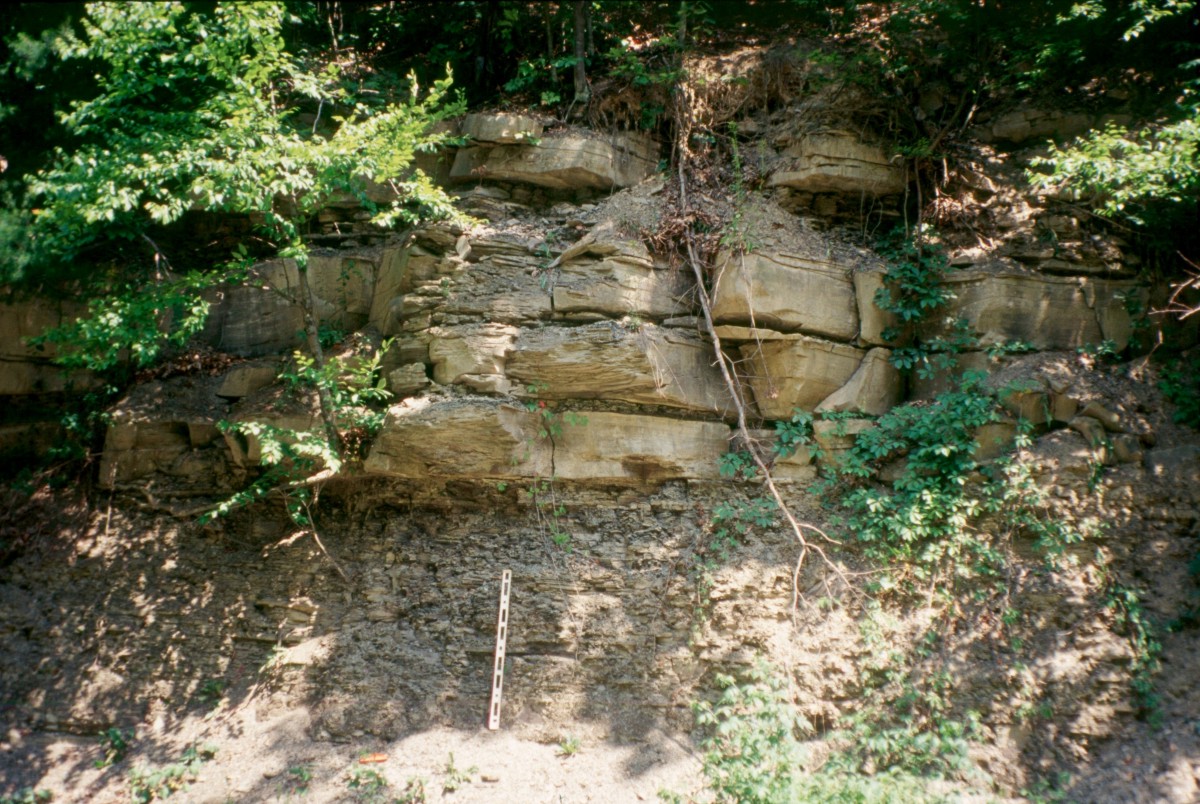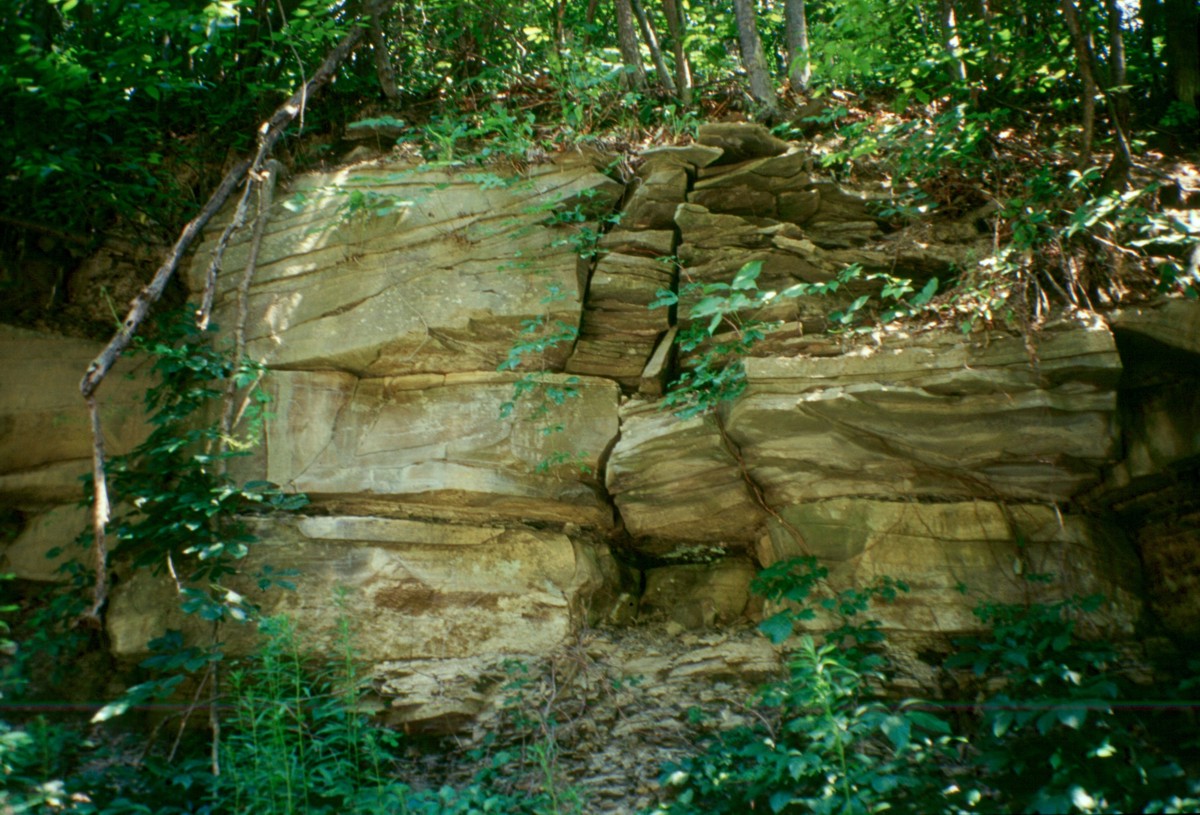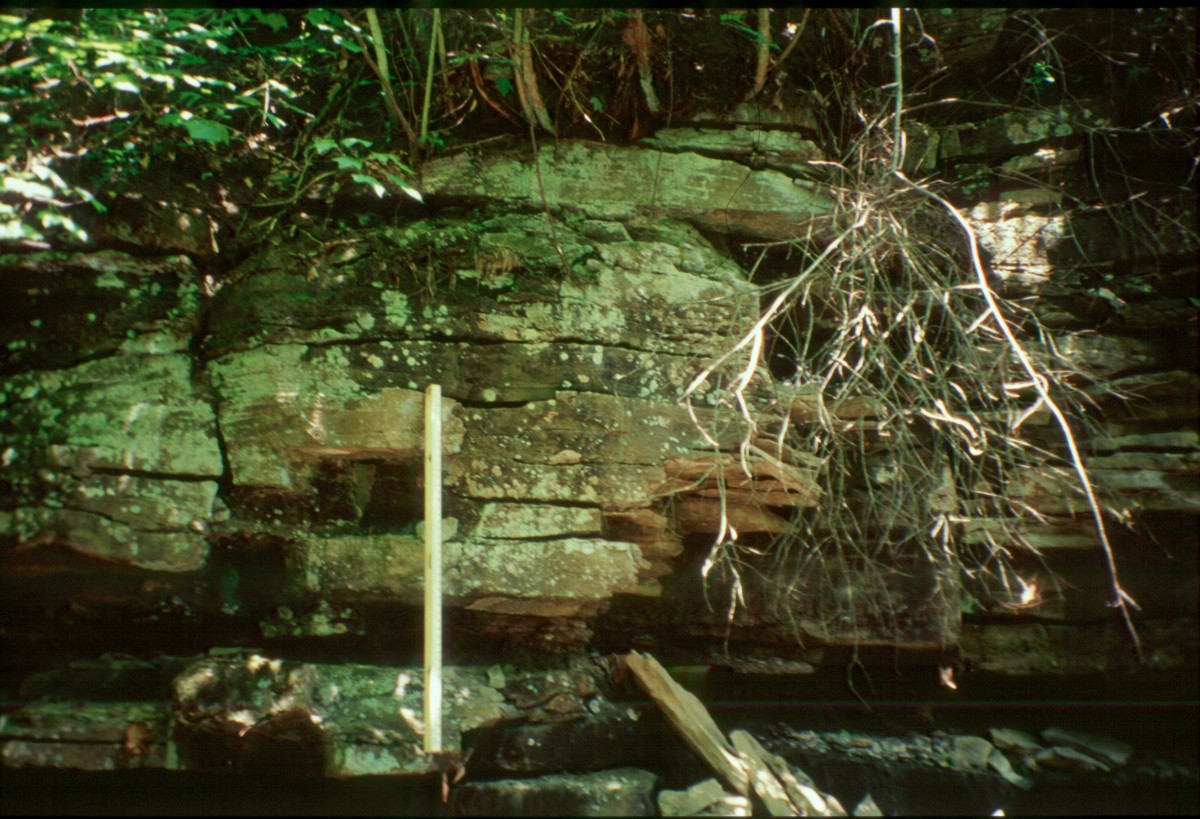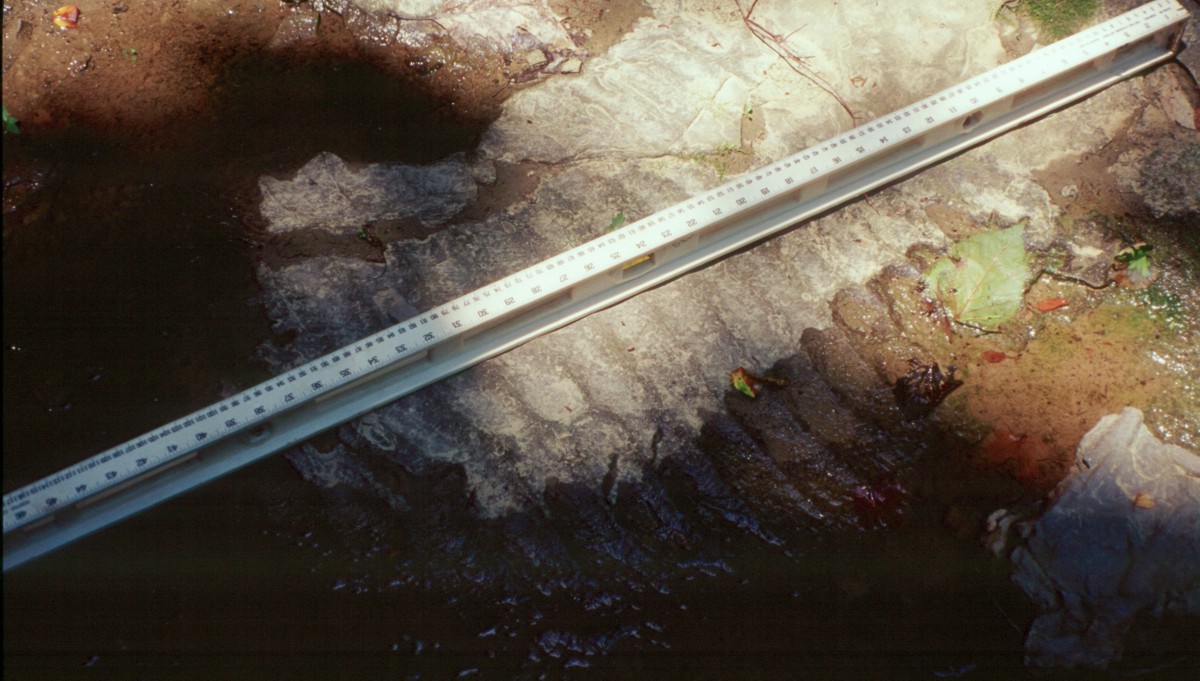Hinsdale Formation (Chadwick, 1933)
Lithology. The Hinsdale Formation is comprised of thick sandstone lenses that can be roughly separated into three packets. The thick sandstone lenses were typically fine-grained sandstone with thick lenses of coquinite typically forming basal lags but were also found as small internal lenses. Thickness variability within the sandstones is high, further compounded by variable erosion of lower units by overlying sandstones. In some localities the sandstones weather a reddish color and at the outcrop along the northern side of Chapel Hill, Humphrey quadrangle, the uppermost coquinite has a red-stained sandstone matrix. The interbedded sections were slightly different from the interbedded sections studied in the Machias, Cuba and Wellsville Formations as the gray shaly silts and silty shales tend to weather a reddish-brown and in the locality of Farnsworth Road, Cuba NY, red silty shales overlie one of the thick sandstone packets. Sedimentary structures were typically SCS with less frequent occurrences of TCS and tabular cross-beds. Small amplitude and wavelength symmetrical and interference ripples were commonly observed on the inner surface of large troughs and swales, implying complex, combined-flow during time of deposition. Thinner sandstones within the interbedded sections contain both asymmetric and 3-dimensional ripples and HCS, several thin sandstones also contain grooves and striations on the sole of the bed.
Ichnology. Both the sandstones of the interbedded sections and the thick sandstone packets contain an abundant, but still low-diversity Skolithos ichnofacies. High frequency of Arenicolites and Skolithos were observed in both the thinner sandstones as well as in the thick sandstone packets. A poorly developed Cruziana ichnofacies consisting of sporadic occurrences of Planolites and Teichichnus is found in the thicker interbedded sections.
Interpreted Depositional Environment. The Hinsdale Formation is interpreted as being deposited well above storm wave base, but still below fair weather wave base, most like upper offshore to lower shoreface. The dominance of SCS and typical tempestite packets imply the Hinsdale Formation was deposited primarily by storms, yet the large amounts of fossils and the singular occurrence of red shales and sandstones suggest the shoreline was moving westward and terrestrial sediments were now being incorporated into the marine sedimentary deposits. The interpreted depositional environment is likely to be either nearshore storm-generated sand ridges or a storm-influenced barrier bars.
Hinsdale Formation


Hinsdale Formation along Farnsworth Road in the Cuba 7.5 topographic quadrangle. Close-up on the right shows the swaly cross-stratification common to the thick sandstones of the Conneaut Group.

